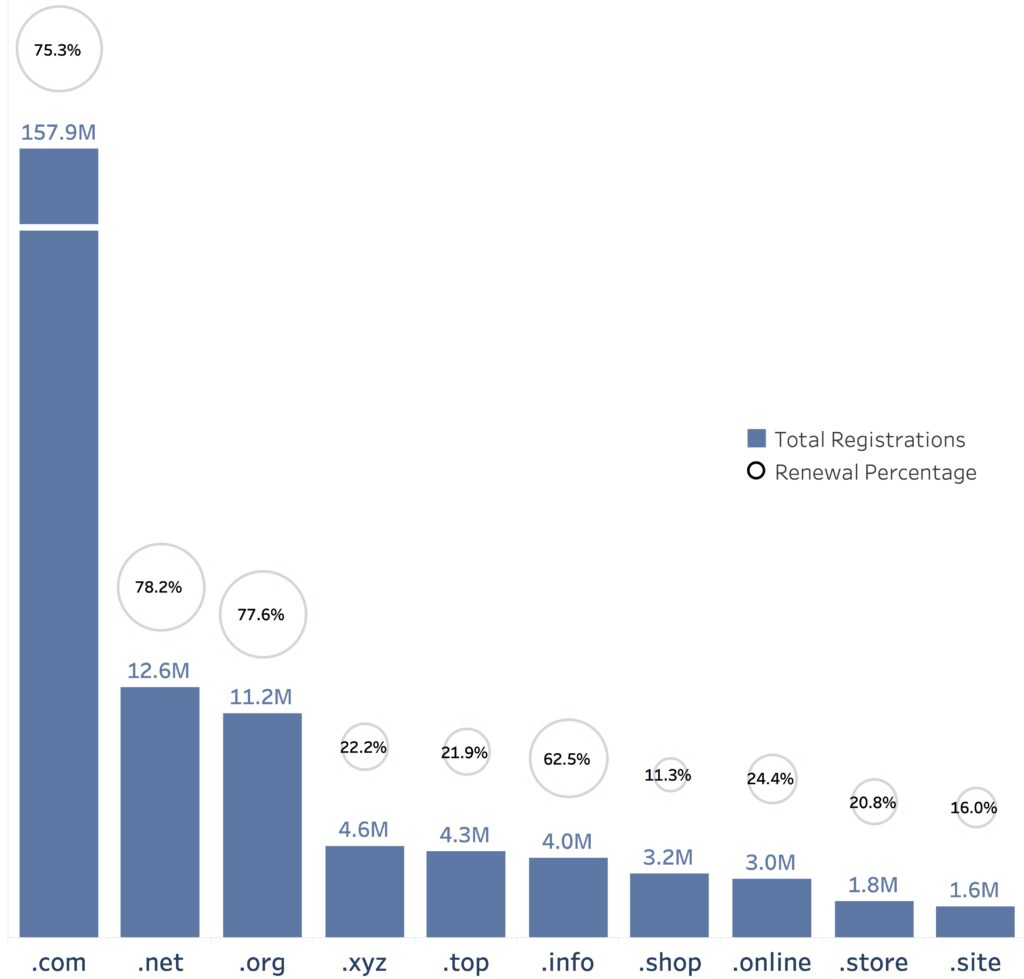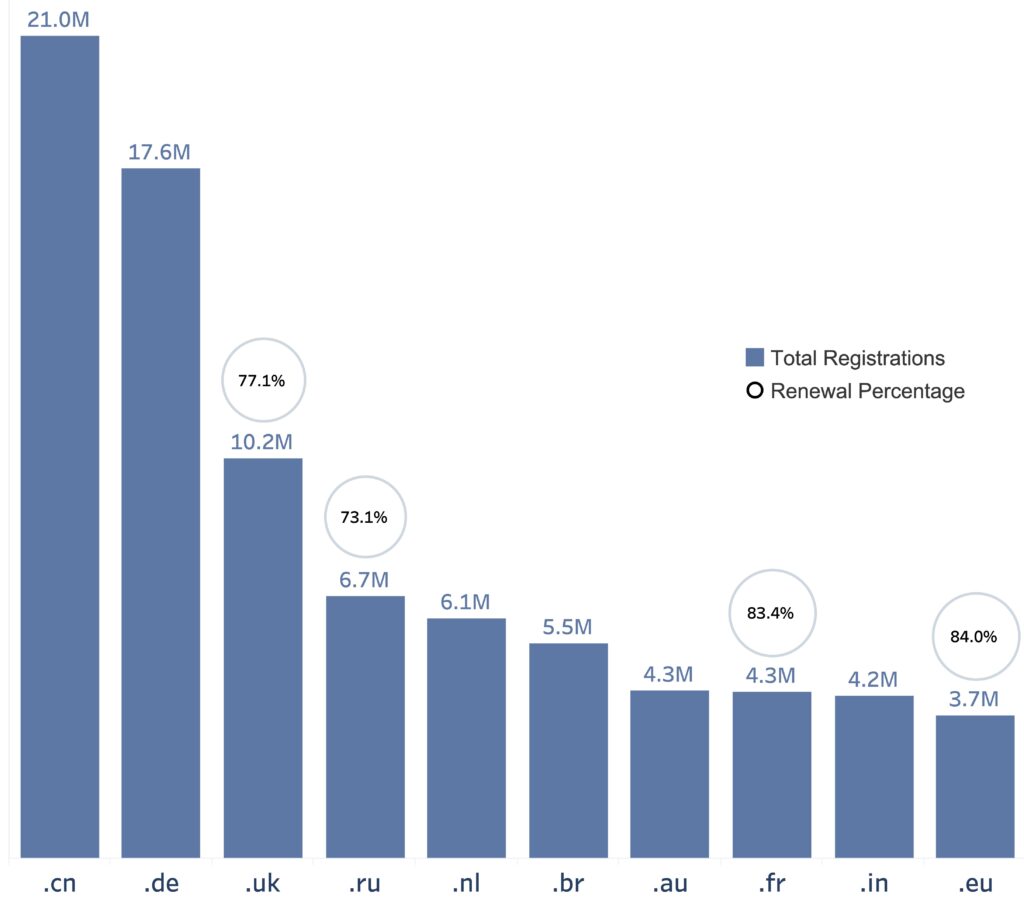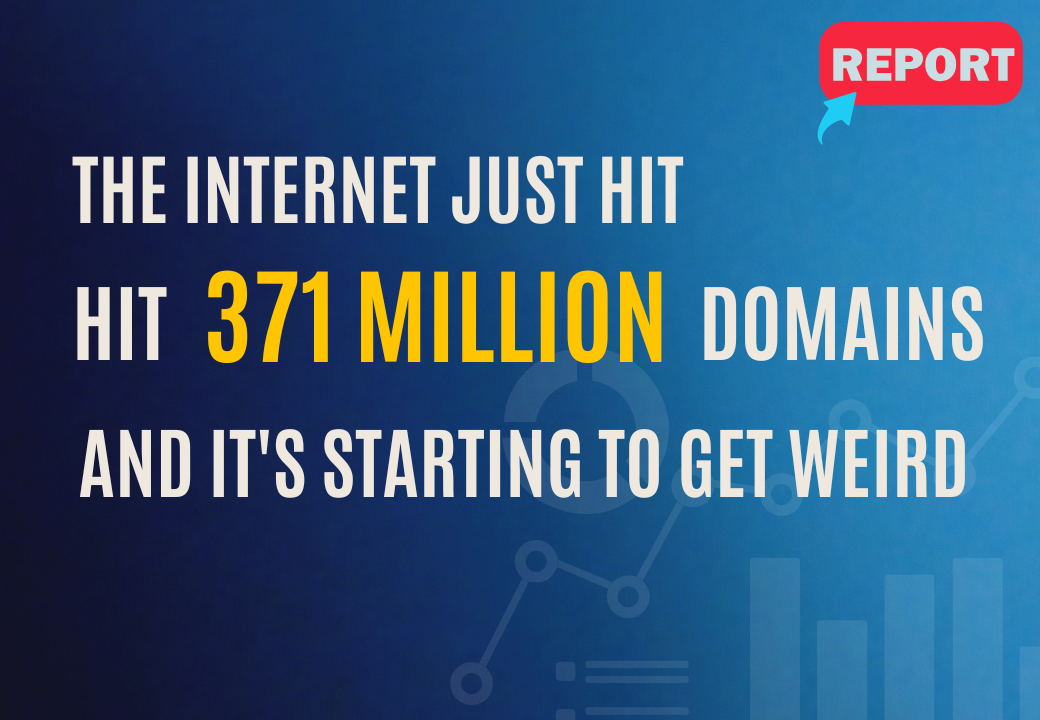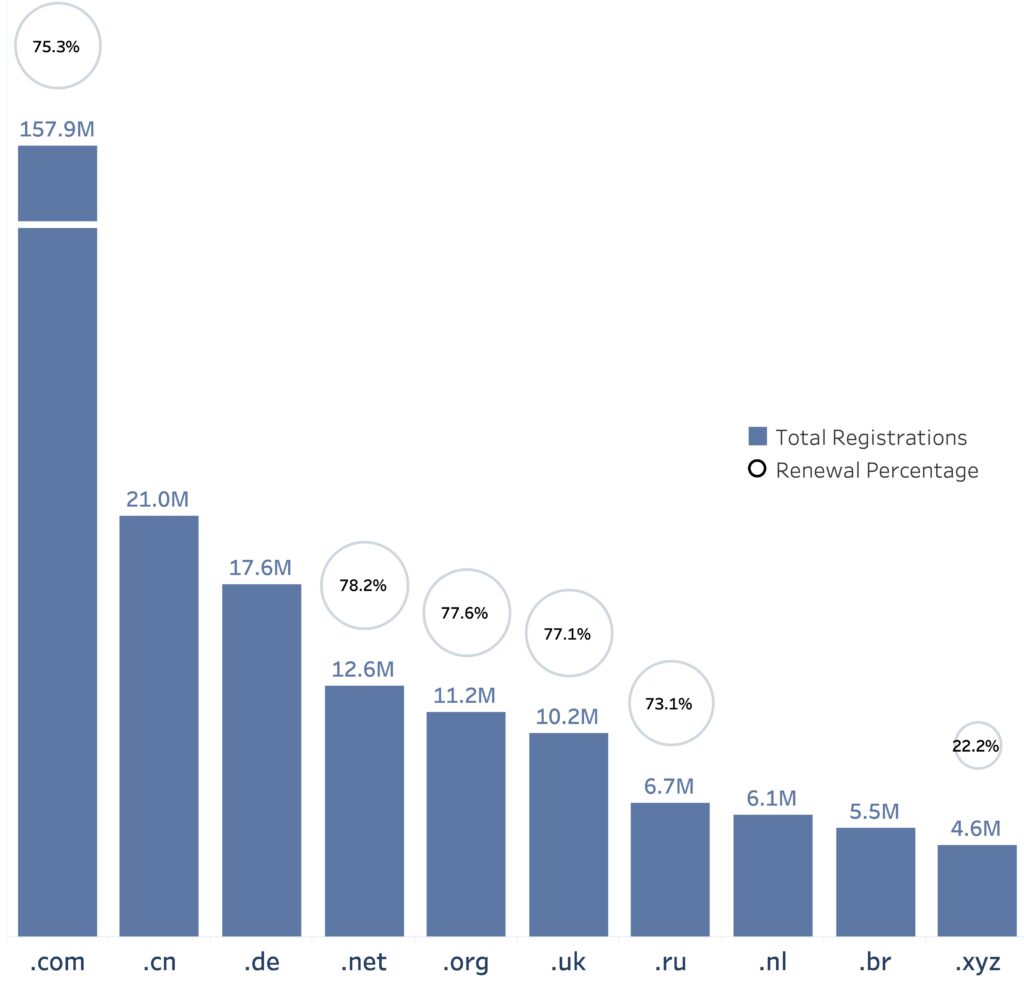We’ve officially crossed the 371-million mark in domain registrations worldwide, and no one’s entirely sure whether we should be impressed… or concerned. According to latest Domain Name Industry Brief (Q2 2025), the internet is growing in a way that’s both predictable and increasingly chaotic. It’s a little like watching a city expand while some of its buildings collapse quietly in the background.
First, the numbers
- Total domain registrations: 371.7 million (up 3.3M since Q1)
- Year-over-year increase: +9.3 million domains (+2.6%)
- .com + .net combined: 170.5 million
- .com: 157.9M (mild gain)
- .net: 12.6M (not doing so hot — down 3.1% YoY)
- Country-code TLDs (like .uk, .de, .cn): 143.4 million
- New gTLDs (.shop, .xyz, etc.): 39.5 million (up 14.2% YoY — the fastest climbers)
.COM lives, .NET dies slowly
At the heart of it all, of course, sits the immortal .com. Still undefeated, still lumbering forward like the dinosaur it is, .com managed to claw its way slightly upward to 157.9 million registrations. That’s not revolutionary, but after a brief period of stagnation, it feels like the old king might still have a few years left on the throne. The same can’t be said for .net, which continues its slow, depressing decline — now sitting at 12.6 million, down from 13.1 million just a year ago. It’s the kind of quiet fade that doesn’t make headlines, but says a lot about where attention (and money) is really going.
The new TLD gold rush… or dumpster fire?

The new kids on the block — the so-called “ngTLDs” like .xyz, .online, .store, and .site — are painting a very different picture. These domains are growing at the fastest rate by far. Their total now stands at 39.5 million, with a healthy 14.2% year-over-year bump. On the surface, that sounds like a success story. But look closer, and the foundation starts to crack. The average renewal rate for these new gTLDs is a pitiful 32.5%. That means more than two-thirds of people who register them abandon them within a year. In domain terms, that’s practically a revolving door. You could argue these TLDs are the TikTok trends of the internet: flashy, impulsive, and largely disposable.
The rise and fall of .XYZ
Then there’s .xyz. For a moment, it looked like it might become the next .com — a wild-card favorite of tech startups, crypto hustlers, and AI tools “launching in stealth mode.” But the shine has worn off. It’s still hanging around in the top 10 TLDs, but its renewal rate? A grim 22.2%. That’s not a domain strategy — that’s domain entropy.
ccTLDs: the quiet giants of the web

Interestingly, while everyone’s watching .com vs. the ngTLDs, the quiet giants in the corner — the country-code TLDs — are doing just fine. The .de, .cn, .uk, and .nl crowd doesn’t make much noise, but they make up 143.4 million registrations and keep ticking upward at a modest, respectable pace. The top ten ccTLDs alone account for over half of all ccTLD domains in the world. Even more impressive is that some of them — like .eu — boast renewal rates above 80%. There’s something satisfying about that kind of consistency. No hype, no collapse. Just functional digital infrastructure doing its job.
Two Internets, one chaotic future
If you zoom out, it becomes clear that we’re living in two parallel internets. One is rooted in longevity — with domains that are stable, purposeful, and often boring. The other is loud and fleeting, filled with short-lived trends, speculative grabs, and domains destined to expire. And that’s fine. The internet has room for both. But it’s hard not to notice the churn. All that growth? A huge chunk of it never lasts beyond twelve months. It raises the question: are we building a more connected web, or just piling up abandoned storefronts on a digital strip mall?
The business of churn
And then there’s the broader economic angle. Domain registrars are clearly benefitting from this churn — more registrations mean more short-term revenue. But behind that lies a deeper instability. The internet isn’t just growing; it’s mutating. And that makes predicting long-term value in the domain market increasingly difficult.
It used to be that registering a domain was a commitment — a statement of intent. Now it’s often just a placeholder, a speculation, or a temporary brand experiment that gets dropped as easily as it was picked up. That shift might not matter to the average user, but it should matter to anyone who builds infrastructure on top of this system.
So… what now?
At the end of the day, the 371 million number is impressive. It tells us that the internet is far from done expanding. But the story behind that growth is more complicated than ever. Domains aren’t just addresses — they’re reflections of how we think about identity, longevity, and presence in the digital world. Right now, it seems we’re thinking short-term. Very short-term.
So go ahead, register that ridiculous .pizza domain. Launch your dream project on .ninja. Just don’t forget to check back in 11 months to see if it still feels like a good idea. Chances are, you’ll let it go — just like millions of others already have.

